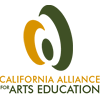Articulating the Value of Arts Education to Corporate Funders
By Jason Pugatch, Associate Director, Young Storytellers Foundation
It’s one of the great anomalies of our society that the arts are both valued and underfunded; both praised and looked upon as a frivolity. A Harris Poll found that 93% of Americans find arts education to be a vital part of a well-rounded education. A visit to the opera or a museum opening continues to carry social caché.
Yet, when it comes to putting corporate money where the mouth is, many are unwilling to fund something as seemingly nebulous as the arts. One of the reasons for this is that quantifying the arts, and program impact isn’t easily summed up in an end-of-year-spreadsheet. How do you put a number on growth of self-expression, confidence and an increase in creative thinking?
You don’t. And as a non-profit vying for corporate funding in the arts, this can feel like an extreme disadvantage. So, it is our job to become “values” advocates as well as arts educators. One of the best means of pursuing this line of advocacy is through volunteerism, which offers a direct connection between arts education and corporate resources.
At the Young Storytellers Foundation, we’ve taken an immersion approach to funding. Because we’re a volunteer organization, we begin any conversation with potential corporate funders by asking them to get involved with our students in a tangible way – a boots on the ground approach, if you will. It’s very easy to deny a written program proposal request; it’s difficult to deny the smile on a child’s face when he or she has created something unique—and with their help, no less. “Art,” and the value it holds, becomes less of an amorphous concept, it’s a student with a name and a face; “education” is a specific school in an impoverished urban neighborhood. Turn a corporation’s employees into advocates for your organization, with experiences to match, and funding becomes a lot easier to find.
This is partly good salesmanship: the first step in car buying is always the test drive. It is also a way of insuring the longevity of your funding relationships. In a fickle funding universe, employee involvement can make or break a request for dollars.
Thankfully, the next generation of business men and women seem to be getting the message on the value of creative thought when it comes to succeeding in their own jobs. A recent New York Times article (MultiCultural Critical Theory. At B School? Jan. 9 2010) explored the newest theory being explored by Business Schools: students need to think “creatively every bit as much as they needed to learn finance or accounting.” Storytelling 101 as a Harvard MBA requirement? Might not be as far off as you think.










